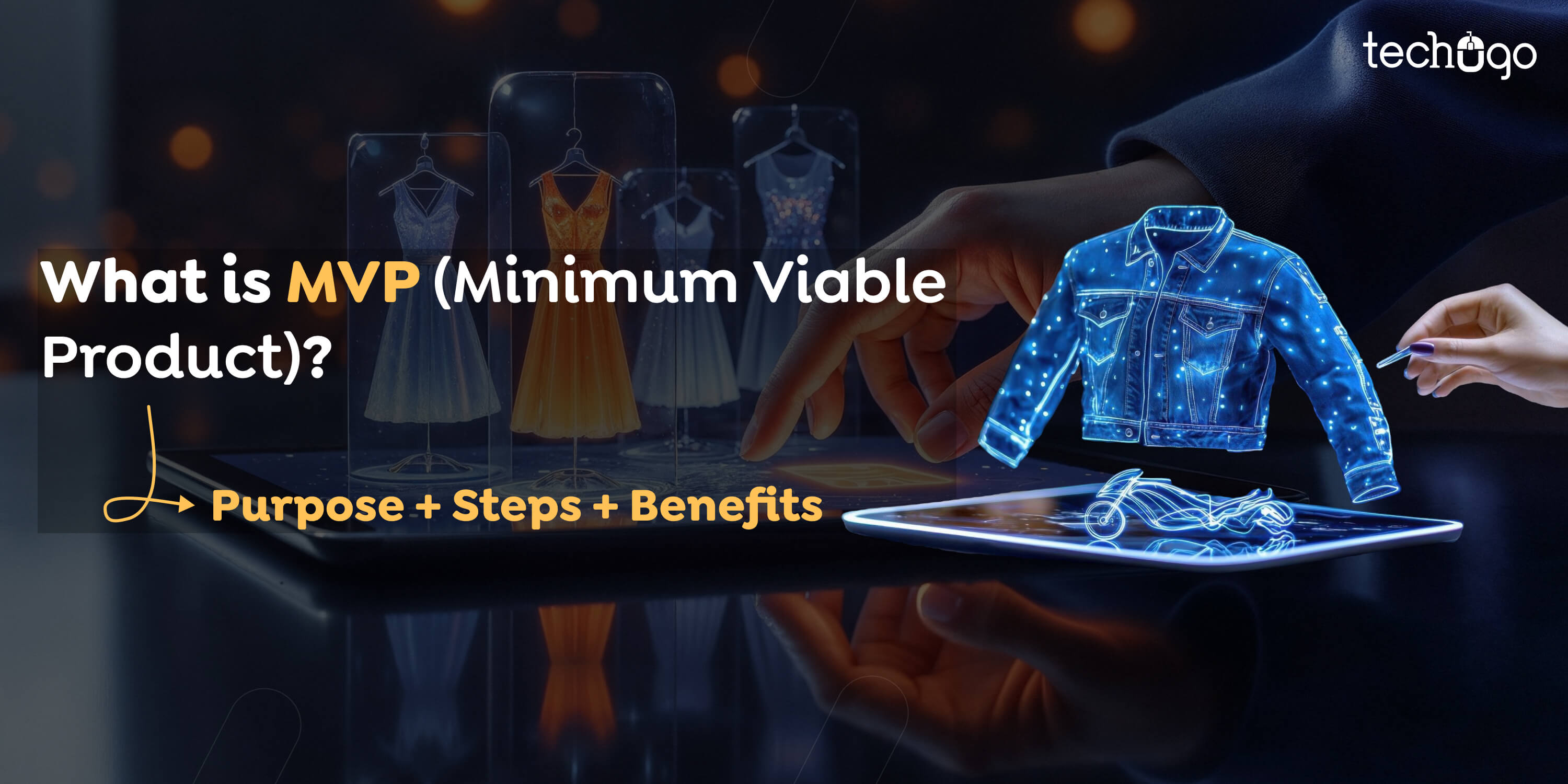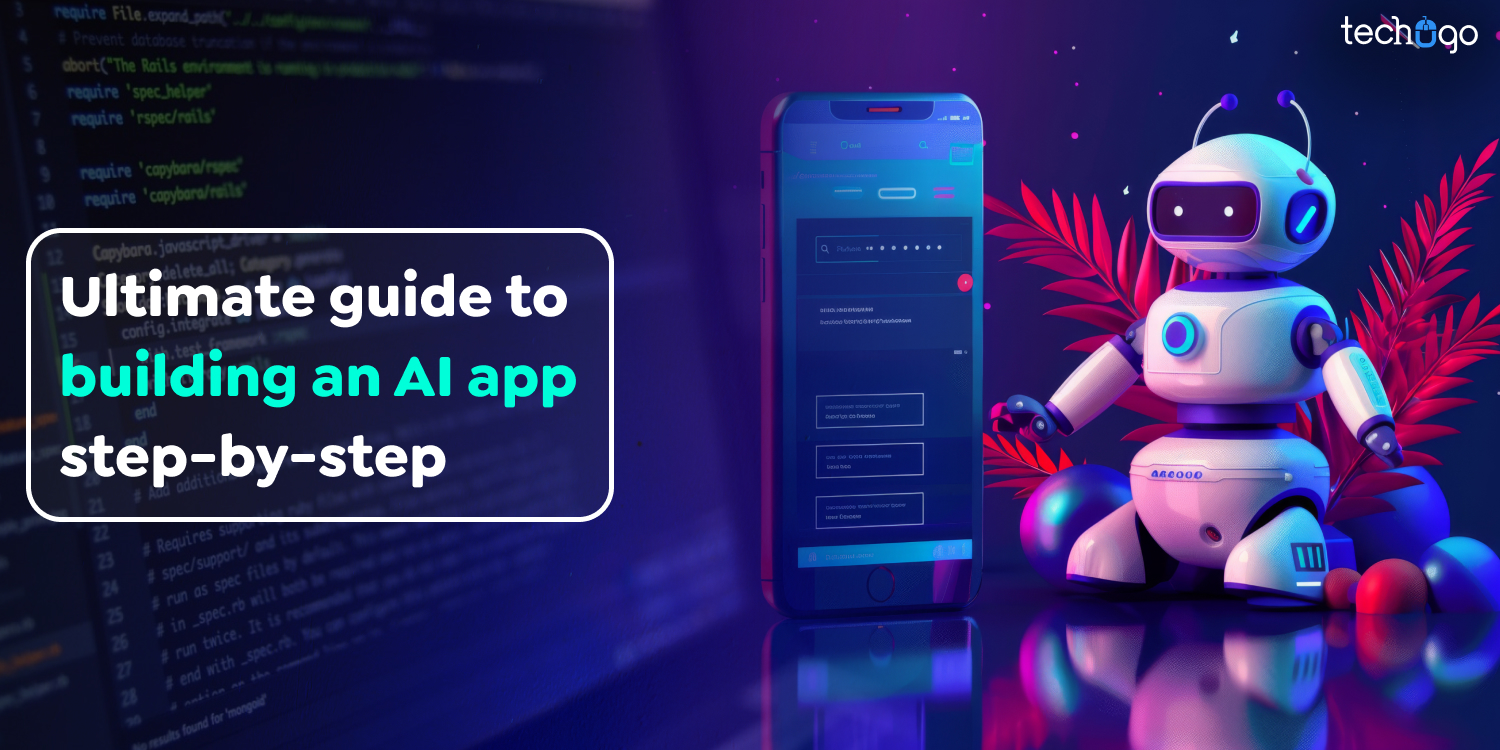11 Feb 2025
What is MVP (Minimum Viable Product)? (Purpose + Steps + Benefits)
Matthew Connor

It is not a good idea to invest money in developing a product only to find out that it isn’t viable in the market. Today, in the age of unstructured startups and companies, survival is perhaps one of the biggest challenges as companies grow within the same space. There is a significant increase in competition. However, is this the sole reason? No. A majority of products do not receive the attention they deserve and disappear from the shelves quickly because they are supplying products customers don’t want. This is why you need to think about build an MVP.
The development of a Minimum Viable Product or MVP has become a favored launch technique that has worked well for large companies like Dropbox, Uber, and others. Instead of trying to create the next big thing, start with an MVP. By using the MVP method, these applications changed over time in response to user test data and feedback. In the end, they evolved into the modern apps we use today.
A Minimum Viable Product (MVP) is a version of the product with only the capabilities needed to solve a primary issue. The purpose of an MVP is to provide instant value, reduce the cost to build an MVP, and collect data and feedback that can be used to improve future versions.
In this blog, we’ll explore how to define an MVP, its advantages, how it functions, and how it is implemented.
So, let’s get started.
What is a Minimum Viable Product?
A minimum viable product is a kind of product equipped with sufficient features to attract early adopters to the idea of the product earlier in the development process. In the field of software, an MVP helps the team get feedback from users promptly to improve and iterate on the product. Because agile development relies on validating and testing the product based on feedback or reviews from users, the MVP is a key element in the agile development process.
The MVP concept is thought of as an amalgamation of “minimum essentials” – something that has all the necessary characteristics to please the first clients. Following up involves gathering feedback that can aid in further product development.
The concept of MVP has evolved since its inception, developing many different variations due to changes in how startups are created, launched, and grown. This process has evolved significantly over the past 20 years. While the build an MVP concept applies to many industries, it is widely utilized in tech startups creating digital software applications such as mobile apps, web apps, IoT apps, AI apps, and more.
An MVP can be misunderstood as a prototype, proof of concept test product, or even wireframes and blueprints, but that is not the case. The term “MVP” refers to a business product that customers can utilize (and typically be charged for), but it is not a “prototype” or “proof of concept” used for internal testing.
Understanding The Purpose Of a Minimum Viable Product
Businesses and developers create a minimally feasible product that can be used for the below mentioned objectives:
To Enter The Market On a Budget
An MVP (Minimum Viable Product) is the most well-known method for introducing a new product. Launching a brand-new product on an affordable budget is typical. Even if there is an error, the MVP can handle various situations by resolving issues and addressing weaknesses, mistakes, and lapses without significant loss. Most companies release an MVP rather than a complete product to determine its financial viability.
To Find The Right Audience
That is the main purpose of build an MVP in the business world. Using the MVP concept, it is possible to achieve the desired goal by drawing ideas based on knowledge and time. Be aware that you’re creating to serve the first users of your product.
To Minimize Errors
In the business world, a different purpose for MVP concepts for mobile or web applications is testing the product concept to eliminate the mistakes of an agile development process in the beginning. This reduces the chance of failure and improves the speed of developing software or app, whatever the circumstance.
To Maintain a Balance Between Business Offerings And Customer Needs
What happens if we end up making something no one wants? This is a huge problem for business owners, entrepreneurs, and creators. This is precisely why the application development firm is expected to create an effective product. This aids in understanding the demands of consumers and allows the company to strike a perfect equilibrium between its offering and customer needs, either via improvement to the product or offering something completely distinct.
To Collect The Maximum Quality Feedback
Collecting customer feedback is crucial for any company, especially when it’s a new venture. However, gathering negative feedback can be difficult. Sometimes, receiving feedback positive or negative can be challenging. Therefore, businesses must design an initial product that is marketable, as this enables them to reach a specific audience and gather high-quality feedback and responses.
Benefits Of a Minimum Viable Product For Businesses
Each experiment conducted in the laboratory is an important step in discovery. The process of creating an MVP is quite similar, as each element of the final product is chosen precisely and carefully. Here, we will explore the benefits of build an MVP.
Winning Investor Buy-In
Companies often count on investors or stakeholder purchases to raise funds to start their tech projects. One of the most important factors in gaining the necessary buy-in is to build confidence in the project you’re marketing and demonstrate how it will achieve the desired results (e.g., improve revenue, reduce checkout time, etc.). Making an MVP can be a great way to secure this investment because it allows you to try your concept before presenting it to investors. It ensures that if you show your idea, you can make an established case to prove the commercial viability of your product.
The bottom line is that stakeholders are looking to invest in profitable products. One advantage of an MVP is that it not only demonstrates the benefits of the product but also provides stakeholders with a tangible product they can see and use. Additionally, if investors decide to invest, it is possible to launch the product without stakeholders having to wait months to see a profit.
Testing Business Concepts
The most significant benefit of build an MVP is that it allows you to test the business ideas you have developed. With a core list of features instead of an entire, feature-rich product, you can test whether the concept of your product is a hit with the people you want to reach. This gives you the opportunity to modify the product’s focus in response to your research.
After the app is released, you can analyze the most active users and how they use the application. The data is used to modify the app’s functionality to meet the users you want to target. If you have a product with a lot of features, it will be extremely difficult to modify anything. You may have to rebuild your entire application.
Early Customer Relationship
Creating an MVP is a common choice for both businesses and startups with limited funds. Therefore, one of the main factors to consider prior to build an MVP is knowing your intended market and what they expect from you.
Thus, businesses need to begin communicating and getting to know their potential users even before they are in the planning process. When creating an MVP, the business owner has the time and money to connect with users who will use the service in the future. This means they can modify the idea of an MVP launch to accommodate customers’ requirements. This type of interaction builds enthusiasm among users and creates an engaged, loyal group of people who are interested in the MVP software. This is one of the major benefits to build an MVP.
Verifying Market Demand
The idea behind a Minimum Viable Product is about experimenting and discovering what works and what does not. The MVP focuses more on understanding market demands than selling or acquiring clients. Many companies believe that they have a product that fulfills the user’s needs. However, that could not be the case because the requirement does not exist or solutions already exist in the marketplace.
To make an app effective, you must conduct user research so that the app provides solutions your users have expressed they require. Build an MVP lets you accomplish this. It helps determine whether potential customers want or need your product, without the heavy investment. As per the results, you can make changes in the product to target a more specific market or even develop a completely new product idea.
Cost-Efficiency
Mature products are the result of years of work and come with a price tag to match. Because they are developed continuously over a long period, the costs are spread out, typically reinvested from revenue generated by previous versions.
The MVP approach also helps prevent the product from becoming overly complex, requiring more intricate code and solutions. As the number of users grows and more data is collected, the MVP enables you to make informed decisions about the product development, leading to more efficient investment of resources.
Even if critical mistakes are made with the MVP and the project fails, you’ve likely avoided significant risks related to time and cost to build an MVP that would have resulted in unpleasant outcomes. In the end, why spend excessive costs on large-scale development when you can take a more cost-effective approach with an MVP?
Quicker Time to Market and Competitive Edge
It is impossible to predict if different companies can introduce the same product before you can. This is a highly competitive market, so launching the product first could give you an edge in the market. In addition to the benefits of MVP creation, the reduced time required to introduce the solution and get it into users’ hands has influenced many businesses to take this route. Numerous well-known companies have benefited from launching an MVP to the public rather than building a full solution from the start.
The significant reduction in time required to make the product available allows teams to receive feedback more quickly, aiding decision-making and resulting in more informed development meetings. Moreover, various MVP tools can accelerate the development process, offering the best alternative to custom coding and other processes from scratch.
Steps To Build a Minimum Viable Product
The process of creating and testing the concept of an MVP is a blend of innovation and practicality. To be successful, you must have a complete understanding of both your vision for the product and the market environment. These steps will help guide you along this path:
Identify The Business Need
Many businesses fail due to the lack of sufficient data on the market for the business they’ve created. In other words, if your organization isn’t aware of the interests and needs of specific groups, the products you offer will not satisfy anyone. It’s important to present a convincing value proposition or compelling reason for customers to buy.
The first step is to study the idea thoroughly, not just in terms of the client’s wants, but also by analyzing your competition. However, this doesn’t end in a particular way. If you’re aware of the need for a new product, make sure you identify and understand both immediate and long-term needs.
If the need is long-term, what are the key requirements for success? This understanding will help you make the right decisions about which type of mobile application you’ll need to succeed. Additionally, consulting with a minimally viable product development expert can guide you further in developing your product.
Study The Market
Next, you must do market research. By doing this, you’ll be able to gauge your competition. It is important to know if competitors exist. If there are, you’ll need to find out how your product compares to competitors. A high degree of competition is a sign that you must distinguish yourself from a variety of similar products either by distinguishing your product with a more appealing design or by making it easier to meet users’ needs.
Another way to succeed could be by offering an alternative solution to an existing problem. By using the competitive environment to your advantage, you can demonstrate the value of your offering and prove its effectiveness compared to other products. While your main focus must be on your primary market, look at other markets. A global outlook will reduce the possibility of failure in foreign markets if you decide to grow soon.
Once you’ve completed your research, you’ll be able to identify your ideal customers and lay the groundwork for an early marketing strategy. To do this, create an in-depth buyer persona that goes beyond basic demographics like gender, age, and location.
Create a Business Plan
For building an MVP, the “business model” is defined by three key elements:
Value Proposition: A concise description of the benefits customers can get or expect from the product/service. This should consider three main aspects: the problem you are solving, how you differ from competitors, and the customer.
Monetization Strategy: Although you may not implement monetization in MVP 1.0, it’s important to plan for it in future versions. This strategy will help you avoid future errors and additional costs.
Distribution Strategy: Consider how your product will reach customers. Choose the most efficient and effective channels to deliver your product.
Identify User Flow and Functionality
User flow is an elaborate plan that outlines the actions that a person takes to reach the desired outcome within your service. The process begins with the user’s first interaction (e.g., getting to your website), and then they follow the steps until they reach a successful outcome (e.g., making an order).
Entrepreneurs most frequently face the issue of having too many features in their products that aren’t essential to creating a viable minimum product. This is why, when creating an MVP with the expertise of an enterprise application development company, it is important to split the features into multiple upgrades, starting with the most essential features to be included in the first launch. There are many ways to decide which features must be part of MVP 1.0.
Prioritization begins with brainstorming, leading to a list of potential features. Each feature is then categorized based on its importance and impact on the overall value. Features that don’t significantly contribute to the product’s value can be pushed back for later phases.
Planning the MVP Creation
A successful MVP development process should be smooth and maintain product quality without exceeding the budget. One of the most important factors to ensure a smooth MVP phase is thorough planning. At this stage, document all the requirements for your app idea, including key features, milestones, timelines, and other crucial details.
Before launching the MVP, decide whether you will develop the app in-house or work with an app development company. To make the best decision, consider the available expertise and your budget. Once you’ve made your choice, dive deeper into the development process by addressing key questions:
- Who will be on the app development team?
- Does your product idea require more research?
- Who will design the app’s layout?
- Will you pursue cross-platform or native development?
- How will testing be conducted?
If you find these decisions challenging, consider involving professionals who can help guide you to the right choice.
Minimum Viable Product Development
When you’ve answered essential questions, build an MVP process starts. Most of the time, MVP development follows an incremental approach. Your team slowly builds up the product through several cycles of improvement. To ensure you’re in the same boat as the team, plan regular check-ins every two weeks to observe developments and spot potential obstacles.
During development, MVP developers are typically tempted to include features to enhance the product, particularly if they lack funds. However, adding features is not the best strategy since it undermines the philosophy of MVPs.
If you can afford to include additional features, consider them during the initial planning phase, but don’t get overwhelmed. Keep in mind that the MVP’s primary goal is to quickly validate the product and gather feedback to refine it based on customer needs.
Test and Launch The MVP
MVP testers are expected to carry out frequent reviews and tests throughout the development process to detect and address problems they become problems. This will help you prepare for launch by developing a marketing and user acquisition plan.
Before releasing the product, the MVP development team can ensure the MVP is functional, usable, and provides value to the intended audience. They will help introduce the MVP to a small segment of early adopters (or beta testers) and closely monitor the release to address any immediate issues.
Receiving positive feedback throughout MVP creation is crucial to its success. It’s a critical instrument for gathering insights about features’ priorities and identifying bugs. Early adopters are not just a way to confirm your idea; they also serve as idea generators and testers of your MVP. Their input lays the foundation for ongoing growth and product improvement based on user feedback and data analysis.
Develop Your MVP Based on Feedback
Use the information gathered from user feedback and performance data to continuously improve and iterate on your MVP. Focus on prioritizing features that increase user engagement, retention, and satisfaction. Work closely with your development team and IT provider to implement regular updates in response to user feedback.
It’s also important to track performance metrics, progress, and analyze the effectiveness of the changes made. Analyzing feedback and data ensures that your MVP continues to evolve or modify to meet the needs of users and market demands.
Conclusion
Creating a minimum viable product (MVP) requires more strategic analysis than development. Companies aim to test their ideas and refine their concepts by leveraging their user base. It doesn’t have to be perfect, it just needs to be effective. The MVP approach offers a functional software solution to gather insights into your customers’ needs without wasting time or money.
One key takeaway is that an MVP allows you to start with less and build iteratively towards a higher-quality final product. It lets you refine and polish the product while using user feedback to make the right decisions. With each release, the application improves, increasing its ROI and eventually becoming a fully mature app. The key is to evaluate the essential features of your MVP and truly understand your target audience. With a solid MVP plan, there’s no limit to how powerful your MVP can become.
Get In touch
We are excited to here from you and let’s start something special Together. Call Us for any inquiry.
Write us
sales@techugo.caJust a call away
About you




